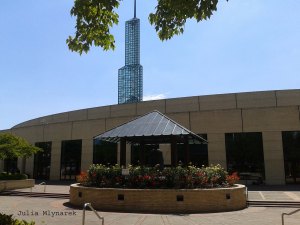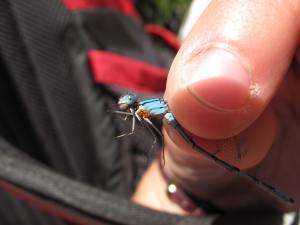I am going to go back in time from the last post and talk about my summer field work.
As a biologist working on insects and doing field work in Canada, you are restricted to the summer months to collect your data to have something to work on during the year. I do have to say it is very exciting preparing yourself, making sure your study design and questions are as perfect as possible, packing the equipment and waiting for the first day that you collect. This post is going to be in two parts, one about the pleasures of collecting and the second about what else I saw during my trip. Both will, hopefully, be enjoyable for you.
This summer, a great opportunity came up to do a project on damselfly-water mite interactions in Saskatchewan and Alberta. It is a project that I have been very excited about for the past two summers but because I had to do my main projects in Ontario and Quebec, I had to put it off until this summer. This project came up by accident. John Acorn, my collaborator from University of Alberta, told me that he noticed in the past few years that a species of damselfly, Enallagma clausum, has been newly recorded in Alberta in the past 15 years. He told me that this species is expanding its range into Alberta probably from Saskatchewan. Seeing that I am interested in species interactions, I started wondering whether parasitism rates would differ between the historic sites and new sites. Would E. clausum be leaving its enemies behind? I also wanted to compare E. clausum to a host species that has been present in both Alberta and Saskatchewan for a long time, so I chose a close relative to E. clausum, Enallagma boreale. Therefore, I set out to collect E. clausum and E. boreale at four historic sites in Saskatchewan and four new sites in Alberta. I was relieved to receive the ESC (Entomological Society of Canada) student travel grant to do this study. I packed vials, ethanol, my trusty collecting net, 10x hand loop, and of course a notebook and pencil. I booked my flights and waited patiently for the day to leave.
I decided to fly to Winnipeg because I was on a tight budget and I could get a cheap flight and car rental with unlimited kilometers for 2.5 weeks from Winnipeg.





